Seventeen Years to Ayutthaya
A million people used to live here. A million. At its peak, this was one of the largest cities in the world, which seems impossible when you're standing among what's left. Scattered ruins and tour groups.

History was my favourite subject in secondary school, though I wasn't particularly good at it. At least not in the exams, thanks to my terrible memory. While I couldn't memorise dates, sequences, or who did what when, I was fascinated by the stories beneath the facts. The messy, human stories. What drove people to make those choices? How did their hopes, fears, and dreams shape the world?
History felt alive to me in a way that memorising dates never could. It was less about remembering the "what" and more about understanding the "why." Every historical moment was once someone's present, filled with uncertainty and impossible choices.
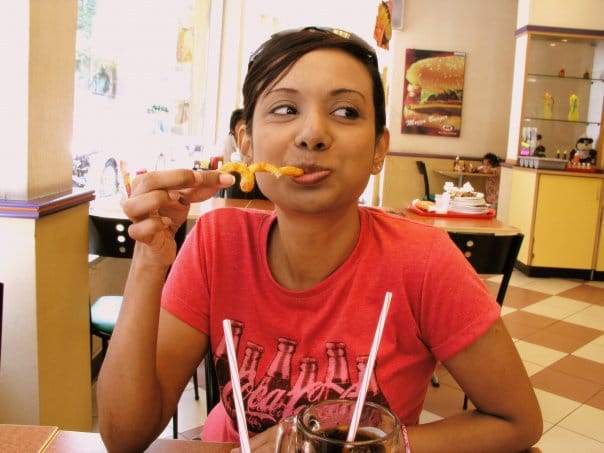
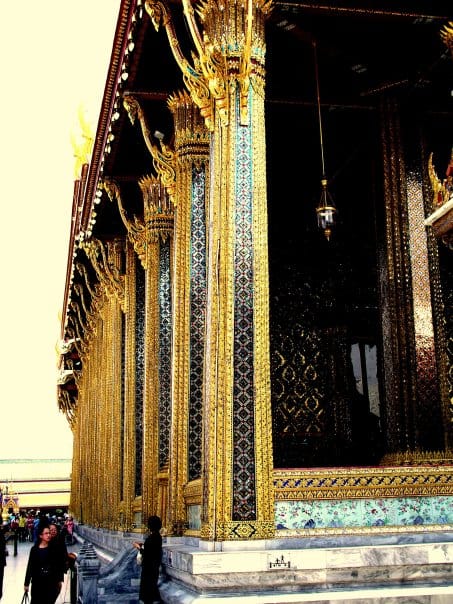
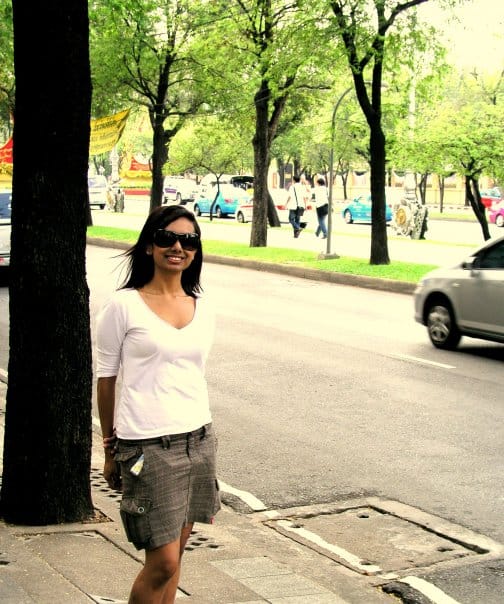
Bangkok, February 2008
Thai history was part of our curriculum, and I remember how excited I was at twenty-four to experience Chulalongkorn University among other places I'd only read about in textbooks. But it would be seventeen years before I'd finally visit Ayutthaya. Seventeen years between reading about those ancient stones and actually walking among them. Seeing those weathered ruins where the Siamese kingdom once thrived, the physical reality of those ancient stones connected with the stories I had been drawn to in ways that no amount of memorised dates could have.
Life happened, as it tends to. I became a mother, then self-employed. Two conditions that make spontaneous travel to ancient ruins somewhat impractical. There's that element about having a child that makes you reconsider temple-hopping in thirty-five degree heat. I learned lessons, grew up a little, accumulated the usual collection of responsibilities that make you nostalgic for the days when your biggest concern was memorising the succession of Siamese kings.
By the time I found myself in Bangkok with ten days to spare, I'd seen enough Wats to last several lifetimes. The temples were beautiful, certainly, but after the third golden Buddha and fourth explanation of lotus symbolism, they began to blur together. I was accustomed to Southeast Asian food. Singapore had cured me of any lingering fear of fish sauce or bird's eye chilies. I needed something I hadn't done yet, something that felt less like tourism and more like completing unfinished business.
The relaxation part became complicated when Myanmar's border conflicts started making trips to eastern Thailand feel less appealing, and seasonal flooding in northern Thailand made train schedules unreliable. We'd been late booking tickets for the Death Railway - that famous stretch of track the Japanese built during World War II using Allied prisoners and forced labourers. The irony wasn't lost on me: I was in Thailand chasing historical sites, and current events were reshuffling my itinerary.
So it came down to a practical choice: drive several hours west to see railway tracks with uncertain accessibility, or visit Ayutthaya, which promised "more things to see" and was safely south of the flooding. The guidebooks made Ayutthaya sound comprehensive. It promised temples, ruins, boat rides, the whole heritage package. It seemed like the sensible option, which should have been my first warning that it might not be the most interesting one.
Ayutthaya was a little more than an hour's drive away. An hour. I'd spent seventeen years not going somewhere that was an hour away from a city I'd already visited. I who had once been fascinated by historical inevitability was now confronting my own gift for procrastination.
Driving up to Ayutthaya, I wasn't thinking about the dates I'd failed to memorise (1351 to 1767) but about the people who had lived between them. The full historic name is a long, grand title: Phra Nakhon Si Ayutthaya, meaning "The Holy City of Ayutthaya." A tad tricky for someone who shies away from pronouncing "Worcestershire" correctly.
After seventeen years of anticipation, this was it: tourists in gorgeous dresses with selfie sticks, vendors selling bottled water at tourist prices, and heat that made you question why ancient civilisations built things before air conditioning was invented. I took maybe three photos, which explains why my photo album from Thailand is mysteriously thin on UNESCO World Heritage sites.
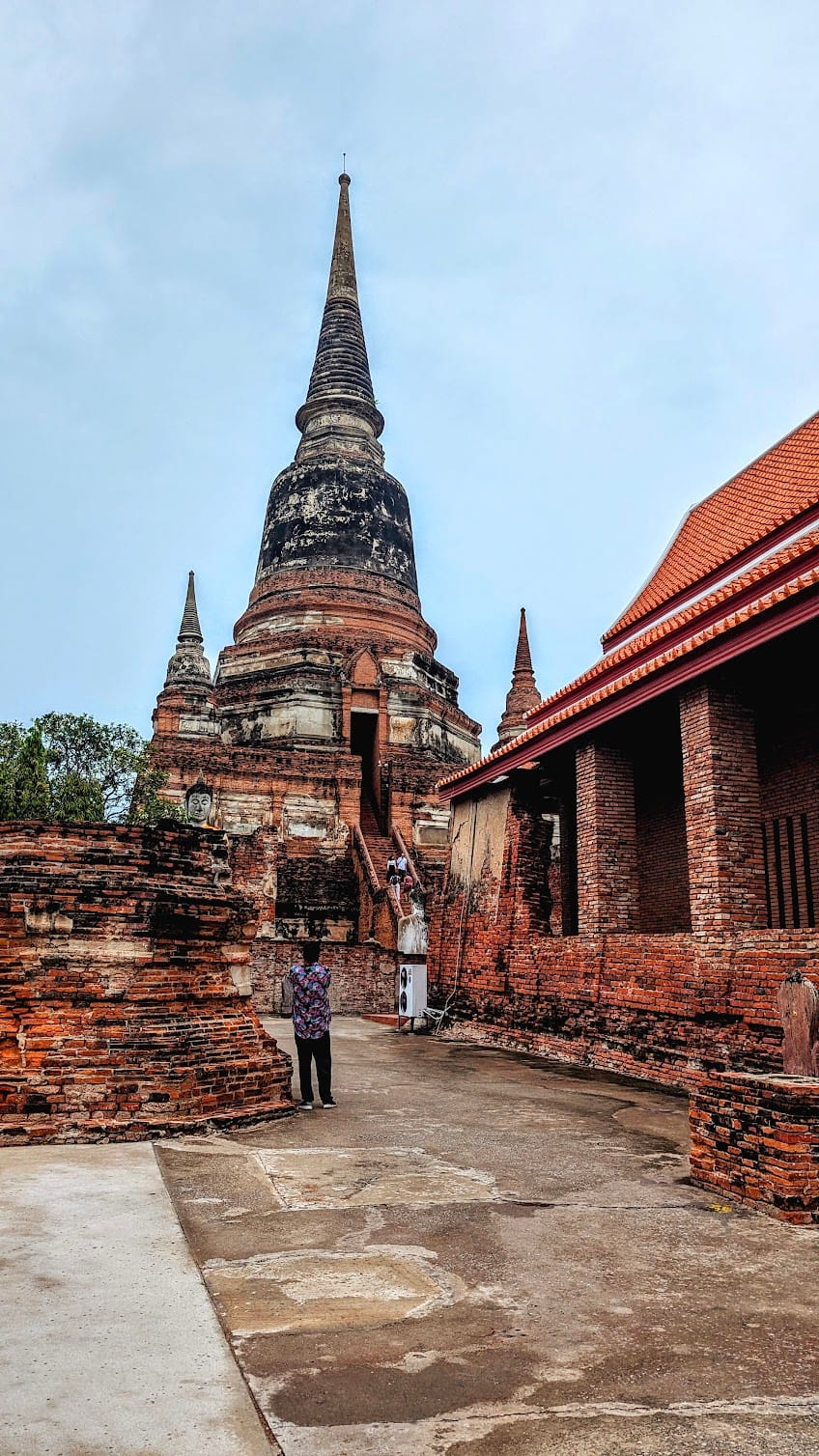
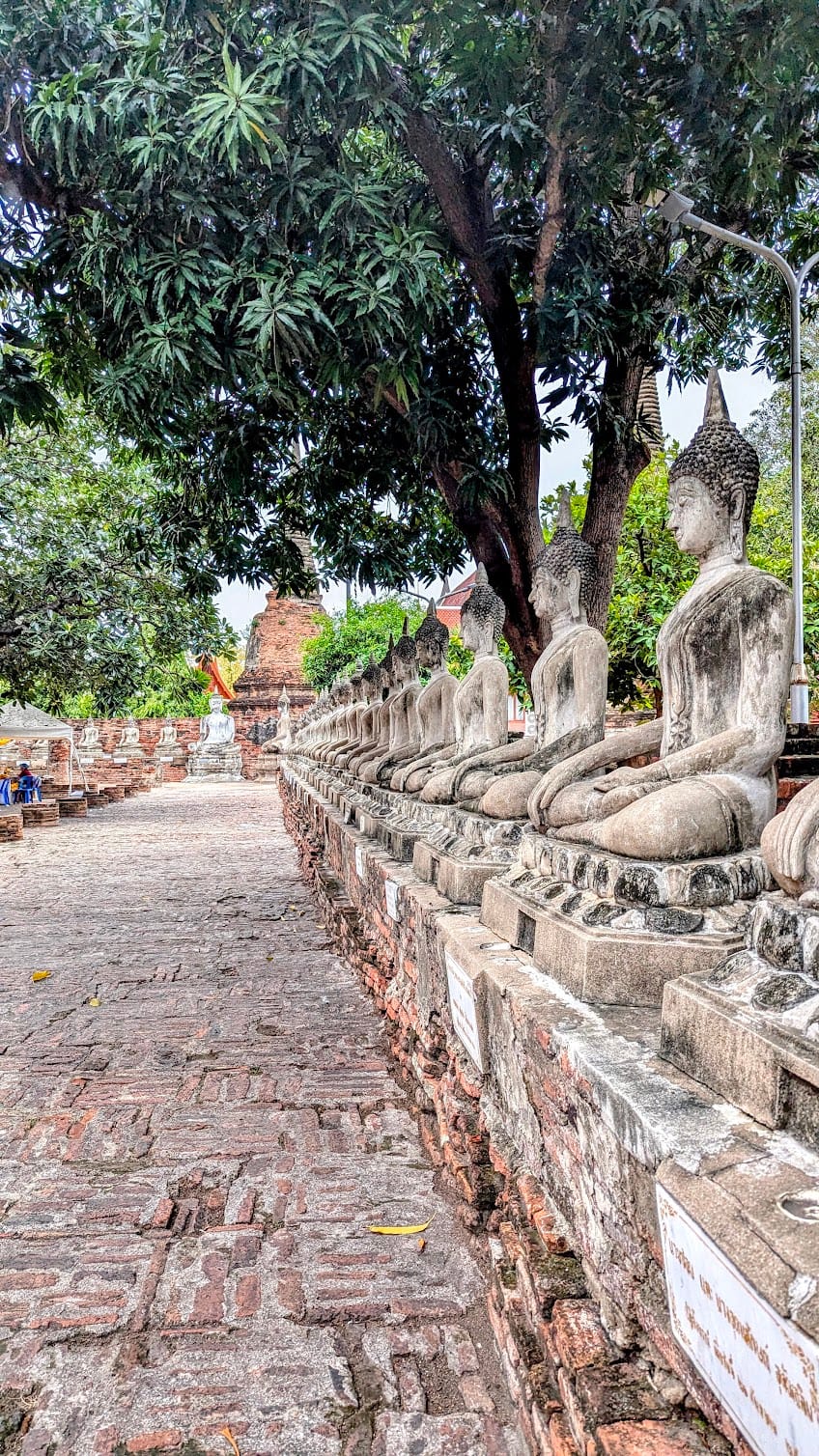
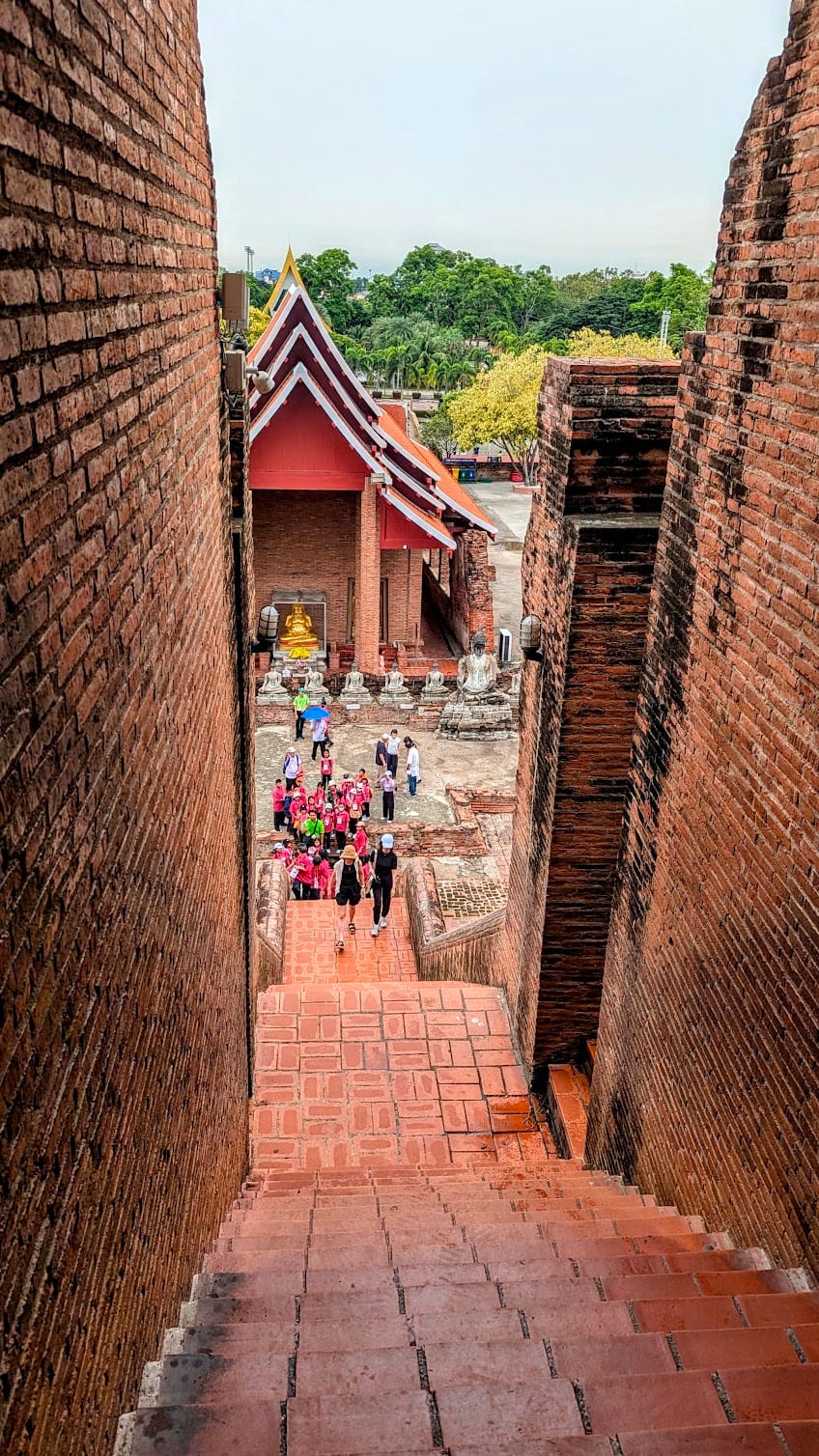
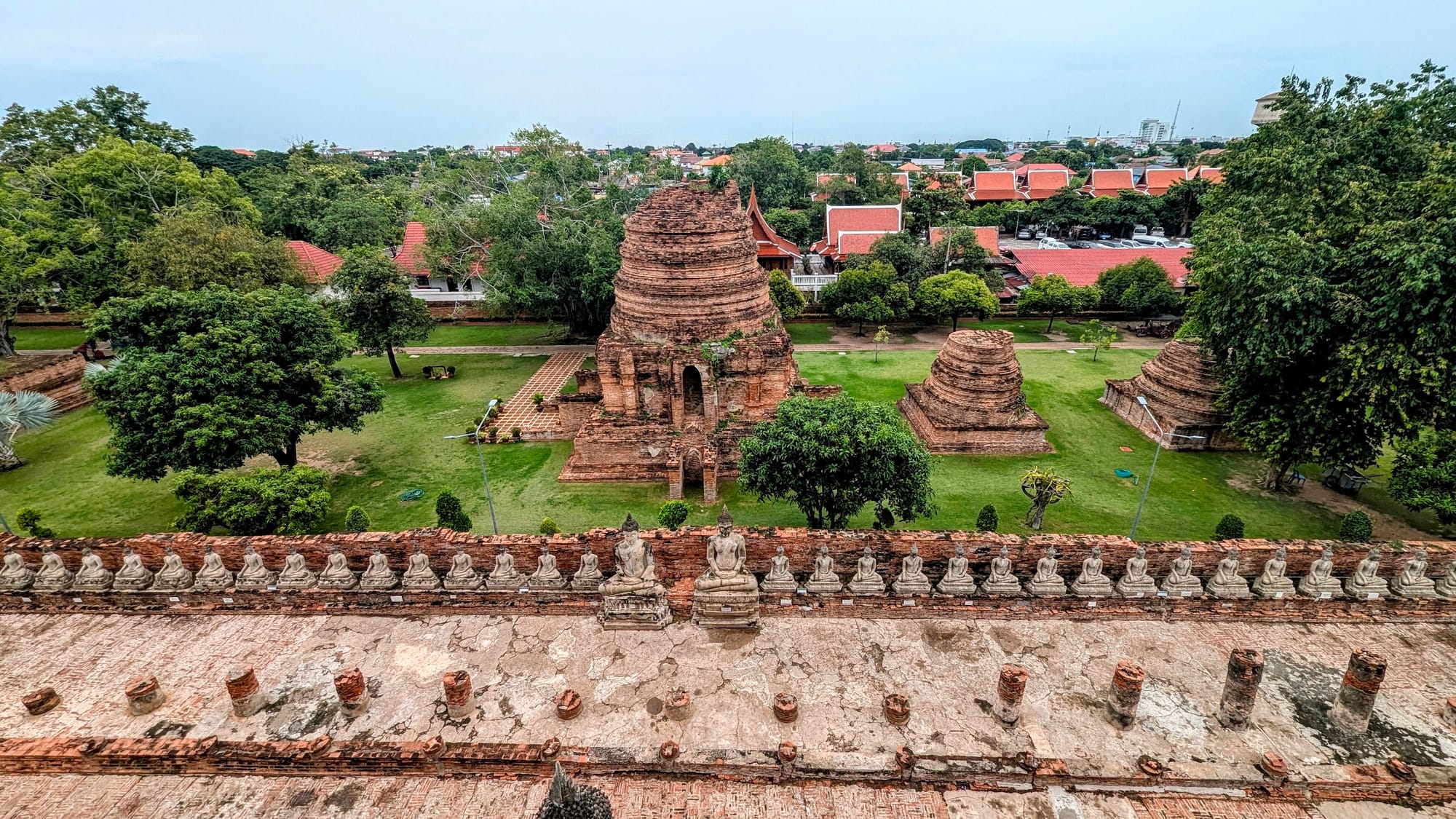
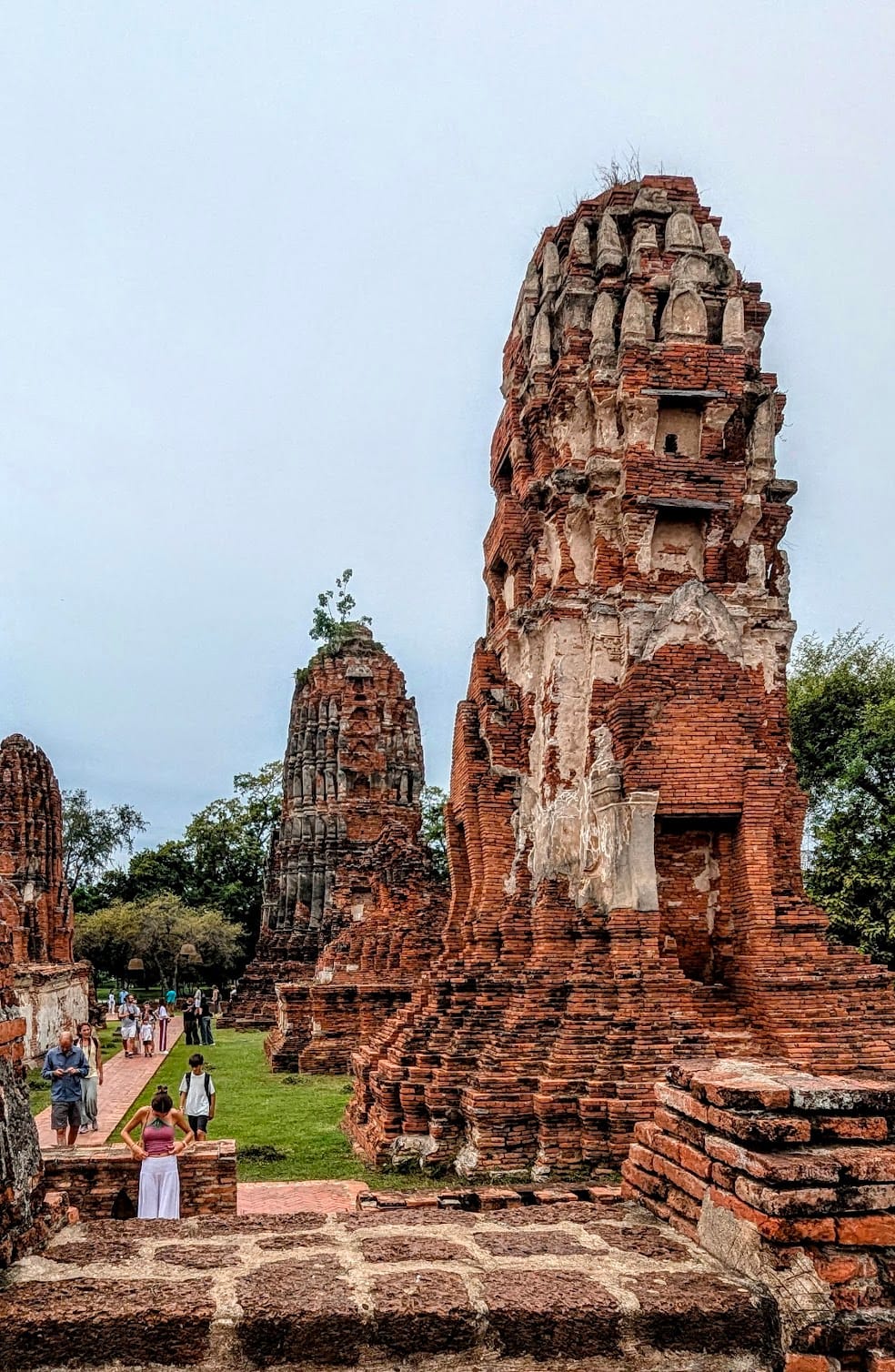
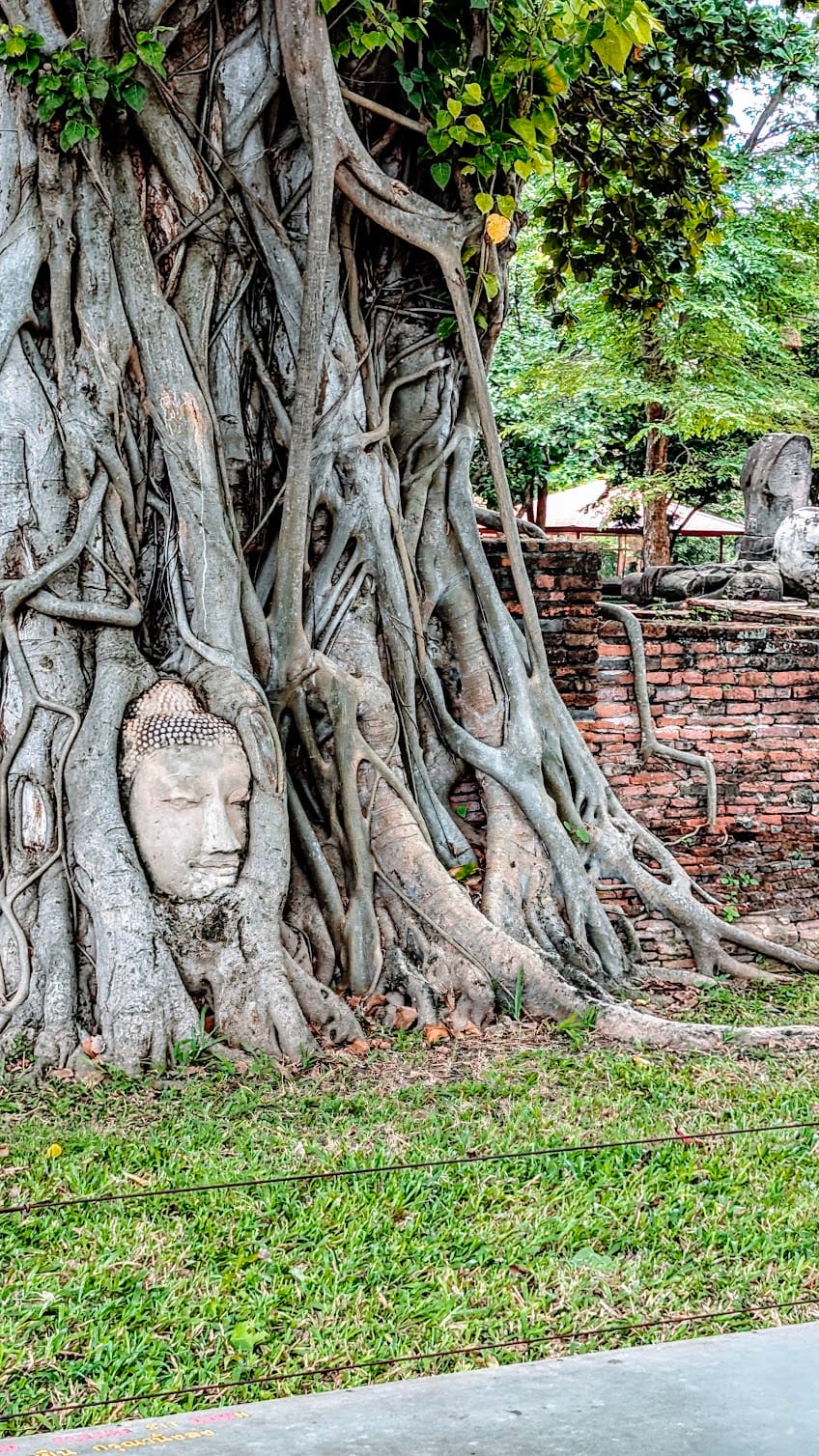
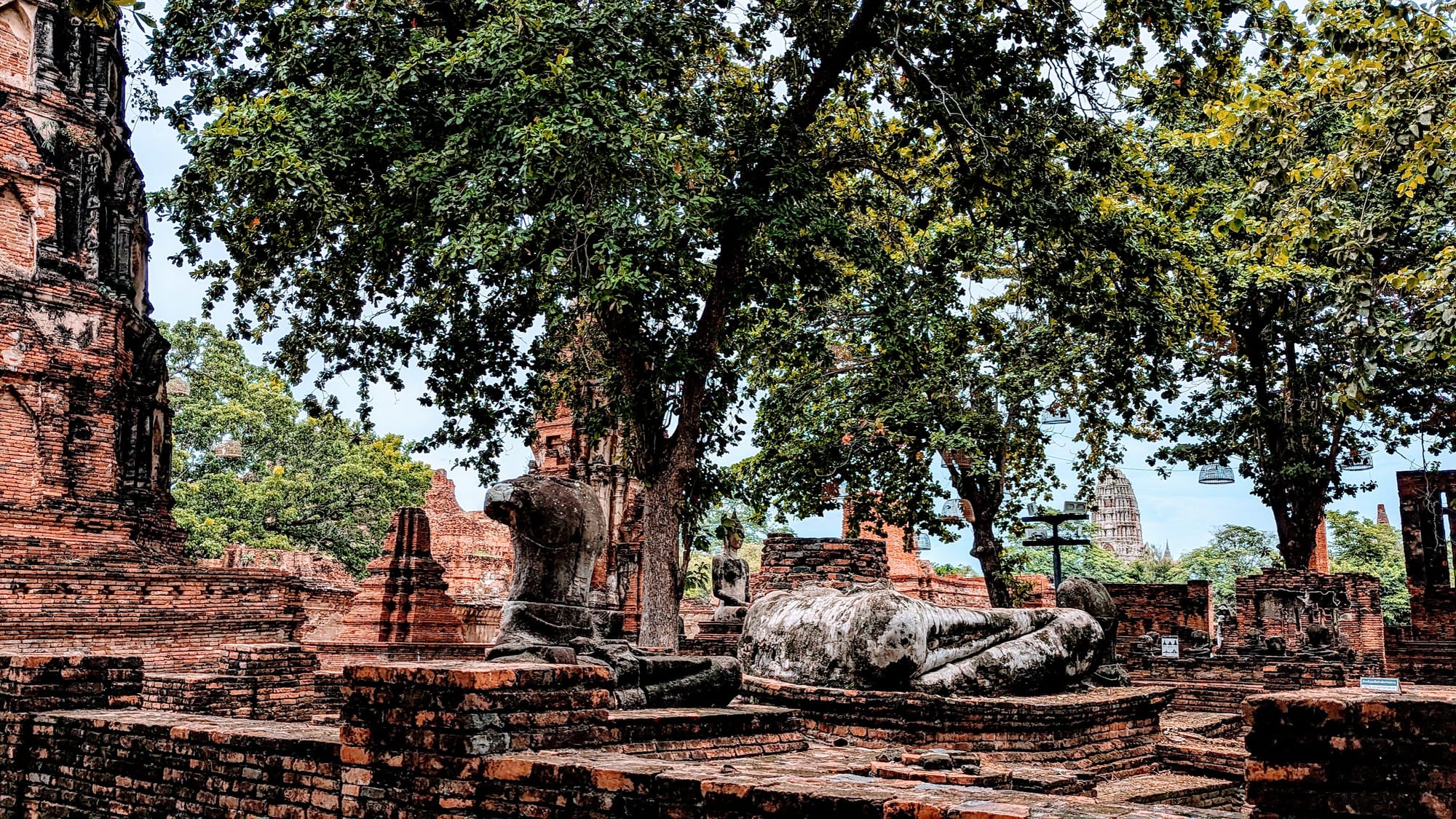
Ayutthaya, 2025
But as we continued to walk and sweat (mostly sweat) I started noticing what the guidebooks don't mention. The stone was smooth where people had touched it for centuries. Same spot, different hands. In what used to be rooms, I found myself wondering about logistics. Where did they put their stuff? These spaces had been someone's bedroom, someone's office, someone's kitchen. A monk had woken up in this particular corner every morning for decades, probably annoyed by the same things that annoy everyone: too early, too hot, not enough coffee. Though I suppose it might have been tea. I peeked in what might have been a sermon room and tried to picture life. Practical concerns. The kind of things that don't make it into the history books but matter more than wars and treaties when you're actually living through them.
Standing in what might have been a courtyard, I tried to picture where mothers hung laundry in a city of a million people. How did families decide what to cook for dinner when the floating markets closed? The same spaces where tour groups now gathered with their cameras had probably been where children played, where people gossiped, where merchants from different countries somehow managed to communicate well enough to haggle over silk and spices.
I found myself thinking about the morning routines that never make it into history books. Who swept these courtyards at dawn? Who lit the first incense? How did they manage sanitation for a million people, store rice during monsoon season, spread news through the city without phones or newspapers?
The Buddha head cradled in tree roots was, of course, the main event. Everyone goes to Wat Mahathat for that photo. The serene stone face emerging from gnarled Bodhi tree roots like some very patient art installation. I'd seen the image a thousand times online, but standing in front of it was different. The roots had grown around the head so perfectly over the centuries that it looked almost intentional, as if someone had commissioned nature to create the world's slowest sculpture.
The guidebooks online offered the standard explanation: during the 1767 Burmese invasion, Buddha statues were beheaded to loot gold or simply to desecrate them. This particular head had either fallen or been dropped near a Bodhi tree, then forgotten when the survivors fled south. The tree grew around it over two and a half centuries, slowly lifting and encasing it until the roots became a protective cradle.
But standing there, I found myself thinking about the person who'd left it behind. Had they been carrying it to safety when the Burmese army got too close? Did they drop it and run, planning to come back later? Or had they deliberately placed it at the base of the tree, hoping the Bodhi's sacred significance might offer some protection? In Buddhism, the Bodhi tree is where Buddha attained enlightenment, so maybe it wasn't accident but prayer?

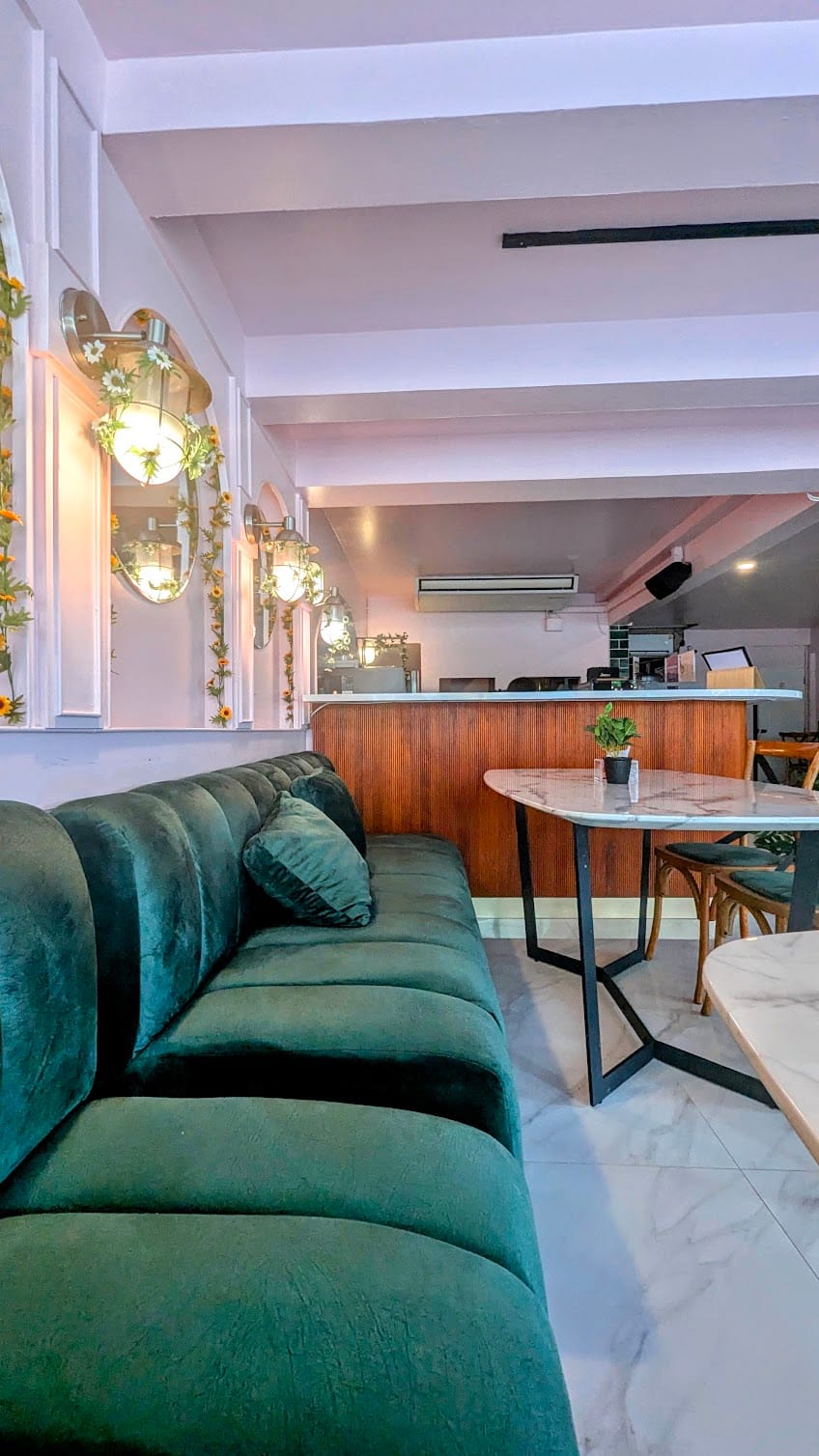
Cafe Thieves & Bar sat in my temporary home in the Ekkamai neighbourhood where Bangkok feels almost manageable. Tree-lined streets, small shophouses, the kind of place where you can walk to get decent coffee without dodging motorbikes every thirty seconds.
The locals I'd spoken to over a lazy lunch at Cafe Thieves & Bar saw it as nature protecting the Buddha. I saw it as time doing what time does - making human catastrophe into tourist attraction, turning someone's worst day into everyone else's photo opportunity.
A million people used to live here. A million. At its peak, this was one of the largest cities in the world, which seems impossible when you're standing among what's left. Scattered ruins and tour groups. They called it the "Venice of the East" because of all the canals, though the comparison probably worked better before the Burmese army got involved.
The Dutch came through. The French. Everyone wanted to see what the fuss was about. Simon de la Loubère wrote an entire book about his visit in the 1680s, probably the seventeenth-century equivalent of a travel blog. I wondered if he'd stood in this same spot, sweating through his European clothes and trying to figure out where people kept their rice.
Then, in 1767, it all ended. The Burmese came down from the north and essentially deleted four centuries of civilisation. The survivors packed up what they could carry and moved south to start over near what would become Thonburi, Bangkok. It took the Burmese army one invasion to destroy what had taken 400 years to build. It took me seventeen years to visit what was left.
I suppose we all have our own relationship with time.


